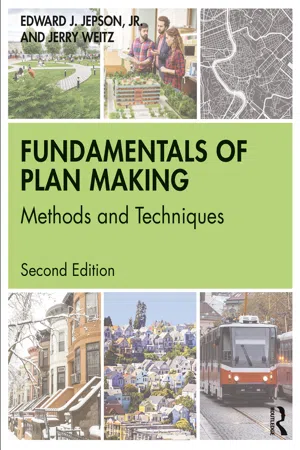Politics & International Relations
Demographics
Demographics refer to statistical data relating to the population and particular groups within it, such as age, gender, income, education, and ethnicity. In the political and international relations context, understanding demographics is crucial for analyzing voting patterns, public opinion, and social dynamics, and for formulating policies and strategies that cater to specific demographic groups.
Written by Perlego with AI-assistance
Related key terms
3 Key excerpts on "Demographics"
- eBook - ePub
- Clifton D. Bryant, Dennis L. Peck(Authors)
- 2006(Publication Date)
- SAGE Publications, Inc(Publisher)
the scientific study of the size, composition, and spatial distribution of human populations, and the changes that occur in these phenomena through the processes of fertility, mortality, and migration(Poston 2000).The subject matter of demography is often divided into formal or mathematical demography and social demography or population studies (Hauser and Duncan 1959a). Formal demography may be distinguished from social demography by the substantive foci of the independent and dependent variables. Both approaches endeavor to model dependent variables that are demographic in nature; that is, they are concerned with one of the demographic processes of fertility, mortality, or migration or one of the demographic characteristics of age and sex. However, the independent variables of formal demography are also demographic, whereas those of social demography are nondemographic.To illustrate, a formal demographer might examine among populations the influence of age composition on the birth rate or, alternately, the influence of the birth rate on age composition. Another illustration of a formal demographic exercise would be an analysis among cities of the effects of the sex composition of in-migrants on city death rates. In contrast, a social demographer might study the influence of a sociological independent variable, such as social class, on the death rate; or the effects of a social psychological variable, such as attitudes about motherhood, on desired and intended fertility; or the effects of a geographic variable, such as annual rainfall, on population density; or the influence of an economic variable, such as economic or livelihood opportunities, on the migration rate (Kammeyer and Ginn 1986). Social demography is necessarily broader in scope and orientation than formal demography. As Preston (1993) has written, it includes “research of any disciplinary stripe on the causes and consequences of population change” (p. 593). - eBook - ePub
- Roger Lee, Noel Castree, Rob Kitchin, Vicky Lawson, Anssi Paasi, Chris Philo, Sarah Radcliffe, Susan M. Roberts, Charles Withers(Authors)
- 2014(Publication Date)
- SAGE Publications Ltd(Publisher)
29 DemographiesElspeth GrahamDemography is an enormously powerful field. Its subject matter (fertility, mortality, migration, and population distribution) includes issues that are essential to social scientists who seek to understand how communities and societies function, to individuals and organisations (both public and private) who seek to change social conditions, and also to people simply interested in exploring issues that are central to their lives in society. (Riley and McCarthy, 2003: 3)The population geographer is concerned with three distinct and ascending levels of discourse: (1) the simple description of the location of population numbers and characteristics; (2) the explanation of the spatial configurations of these numbers and characteristics; and (3) the geographic analysis of population phenomena… (Zelinsky, 1966: 5–6)… a retheorized population geography must empirically and theoretically engage with the historical and contemporary disciplining and regulation of people and population through the management, administration, and control of space. (Tyner, 2009: 43)Introduction
The contemporary study that constitutes demographies is an interdisciplinary research field defined by its quest to understand, explain and predict population change. Like many areas of research, its boundaries are not strictly drawn and its potential scope is therefore extensive. Academics working in the field include demographers, economists, sociologists and social statisticians, as well as geographers, who publish their research in a wide range of population and disciplinary-specific journals. Many would question, perhaps even reject, the use of the term ‘demographies’ (in the plural) as a label for the knowledge they produce, considering it resonant of an epistemic pluralism they do not embrace. For others, concerned with the situatedness of knowledge production and circulation, ‘demographies’ will be preferred over singular labels that hint at hegemonic discourses denying the social embeddedness of research. This tension, as we shall see, is evident in the different approaches taken to the study of population change. - eBook - ePub
Fundamentals of Plan Making
Methods and Techniques
- Edward J. Jepson, Jr., Jerry Weitz(Authors)
- 2020(Publication Date)
- Routledge(Publisher)
3 Demographic Analysis Planners must be skilled in the collection, management, analysis, and presentation of demographic data. After reading this chapter, you will:- have an understanding of the relationship between demographic characteristics and planning;
- have an understanding of key demographic characteristics;
- be able to collect and analyze data appropriate to a demographic analysis, and recognize and exclude variables that are superfluous or unnecessary;
- be able to identify demographic interrelationships; and
- understand and be able to apply the methods of demographic estimation and projection.
Relationship of Demographic Information to Community Development and Comprehensive Planning
An important first step in planning is to gain an understanding of population characteristics and their changes over time in the area being studied. “Demographics” refers to the personal characteristics of the residents of a community as both individuals and as members of families and households.1 These characteristics can be thought of as defining the “market” of a municipality in the sense that they create local demand for public (and private) goods and services. It is essential for residents and planners and other public officials to understand their community’s Demographics so that they can organize their policies on the basis of not only what is needed, but also what is possible. Demographic analysis is a fundamental first step to virtually every planning project. Nearly all planning documents produced will include some reference to the population served by the plan. In short, Demographics are the foundation on which local planning is built with respect to both the decisions that are made as well as the processes that lead to those decisions. Examples in this chapter show that demographic analysis is the fundamental building block to planning knowledge and intelligence.Planning Interrelationships
Planning is fundamentally about people and their characteristics. As such, it requires an understanding of the various characteristics of the people in the area both now and in the future. The population of a given locality or study area will stabilize, grow, or decline, or even experience phases of both growth and decline over time. Communities cannot plan adequately unless they have information regarding how many new residents will live in the city or how many will leave. Analyzing where people are, in what amounts and composition, and at what rates they are expected to increase or decrease in number helps to determine the location and need for housing, the labor force, employment opportunities, public and private facilities and services, transportation improvements, and even natural resources protection and sustainability practices.
Learn about this page
Index pages curate the most relevant extracts from our library of academic textbooks. They’ve been created using an in-house natural language model (NLM), each adding context and meaning to key research topics.


